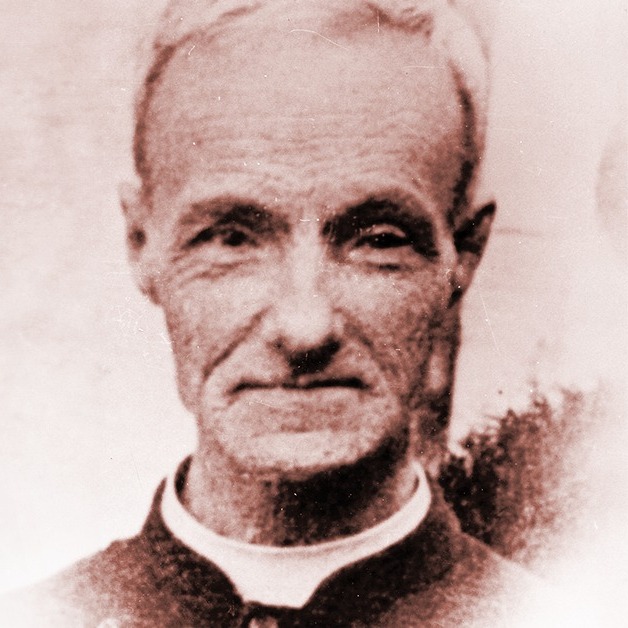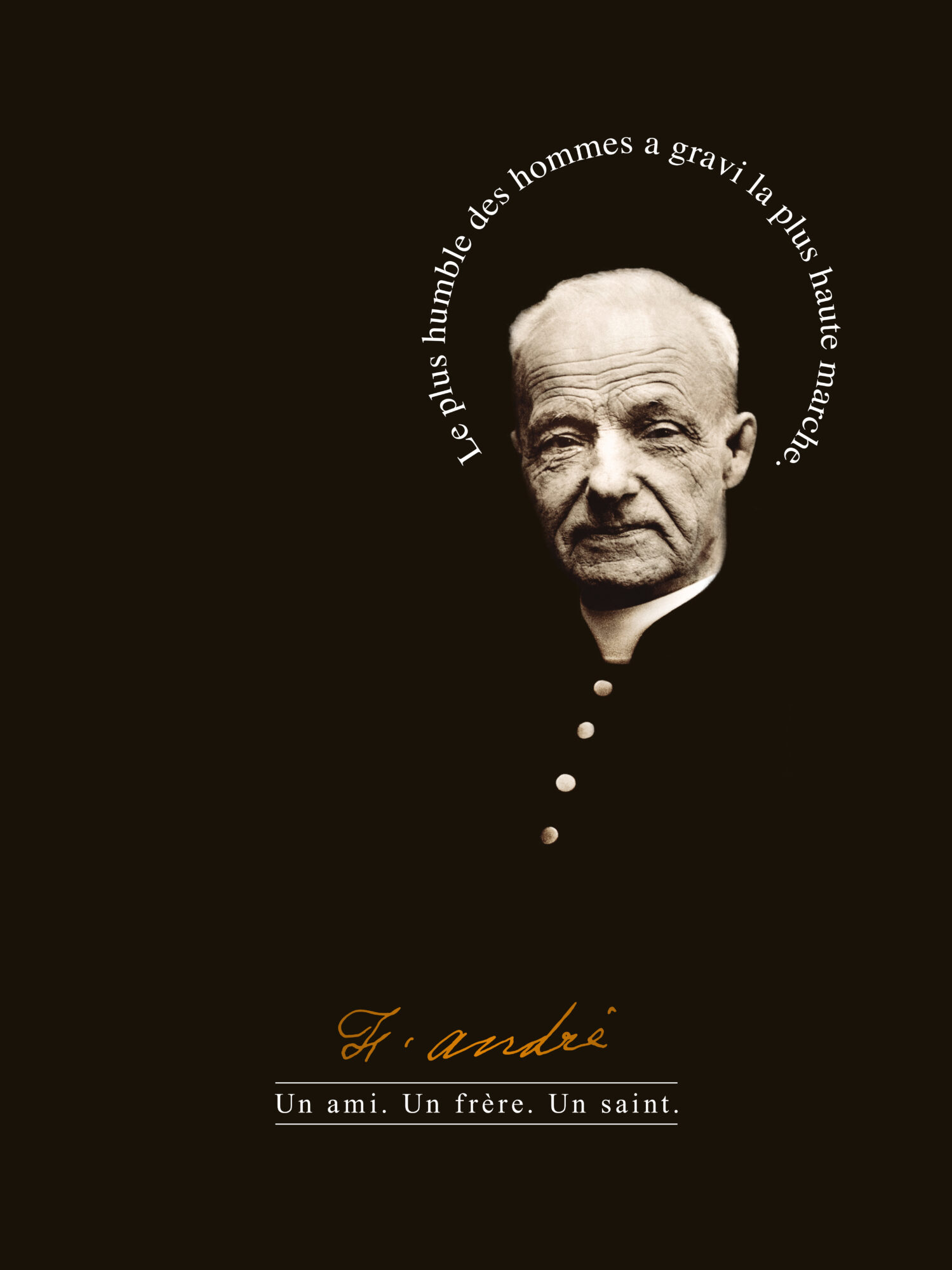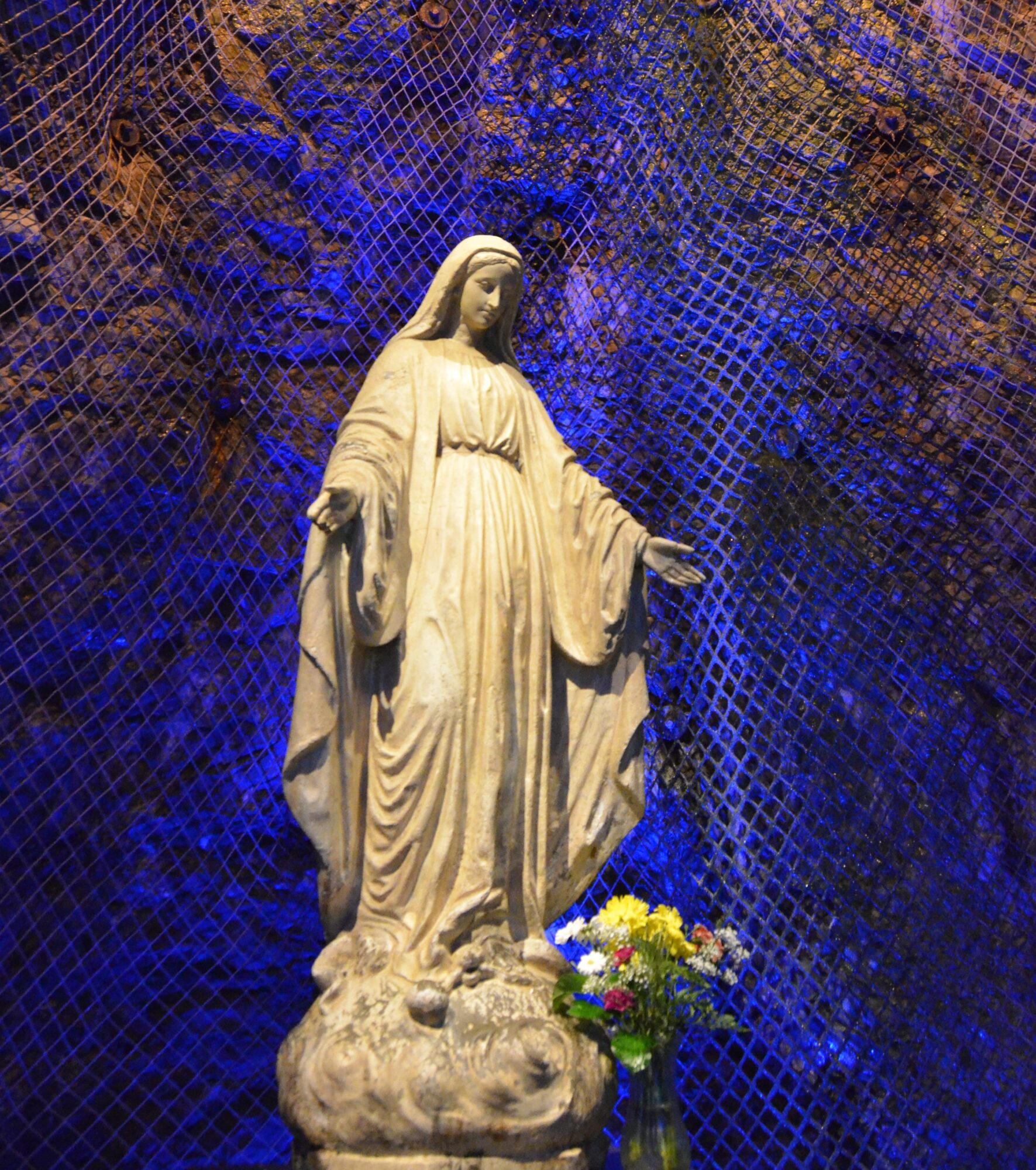Brother André on pious images
As soon as Brother André died, many pious images were produced and distributed by the Oratory. They are usually wallet-sized images with a representation of Brother André on one side and a prayer text on the back. What makes these images all the more interesting is what is written on the back.
The first images produced sometimes came with a relic of Brother André. Nowadays, the pious images available at the Gift Shop come with a medal. Unlike books, these images do not contain a production date. The inscription at the bottom of some of them is in fact the date of the imprimatur, the date on which the prayer was authorized. The same imprimatur can be used on different models of pious images and over several decades. It is thus the details in the title that allow us to guess the production date of an image.Fig 1 : These four pious images use the same representation. However, if we pay attention to the titles, we notice that they were printed at three different times. The second was printed before 1978, the third between 1978 and 1982, and the fourth between 1982 and 2010. CARDG.Fig 2 : Modern pious images produced after the canonization and on sale at the Oratory Gift Shop. The five on the left have the same prayer on the back. Note the disappearance of the prayer for the glorification of Brother André, his cause having now been completed. The two on the right highlight the fact that he is the patron saint of caregivers in Canada, with of course a specific prayer for caregivers composed by Caroline Vadeboncoeur. CARDG.
Some important dates
- Brother André died on January 6, 1937.
- Brother André’s Cause began on November 7, 1940
- Brother André was declared venerable in 1978
- Brother André was beatified in 1982
- Brother André is canonized in 2010.
Until the mid-1940s, we find a unique feature on some old images that we will not see again later: the presence of a relic of Brother André. Although we cannot explain the reasons why this characteristic has disappeared, we are given clues to explain it by understanding how a Cause works. Before a person is declared venerable by the Church, the authorities concerned must eliminate all worship not authorized to the person. The presence of a relic on a pious image thus becomes problematic. In 1944, medals representing Brother André were also withdrawn from circulation. It is possible that the intention was to limit their distribution. In the following years, relics continued to be offered, but they were now accompanied by a certificate of authenticity and their format was more sober.Fig 3 : Two series of pious images. The top series was produced between 1937 and 1940. The one on the left contains a second-class relic and was probably reserved for certain members of the clergy or friends of the Oratory. The series below was produced from June 20, 1940. The prayers on it were printed upside down. CARDG.The first pious images of Brother André were produced only in French and English. However, they quickly became available in a multitude of languages, thanks to the Office of the Cause which took charge of having them translated or thanks to people who did so on their own initiative in order to distribute them in their country. We have thus found a letter written in 1953 by Brother B. Mulebwa who translated a pious image into a Ugandan dialect and took care of its distribution in his country.Fig 4 : Pious images of Brother André in various languages. A) Polish; B) German; C) Spanish; D) Dutch; E) Ugandan dialect; F) Italian; G) Kókborok, an Indian dialect spoken in the state of Tripura in northeast India. CARDG.







